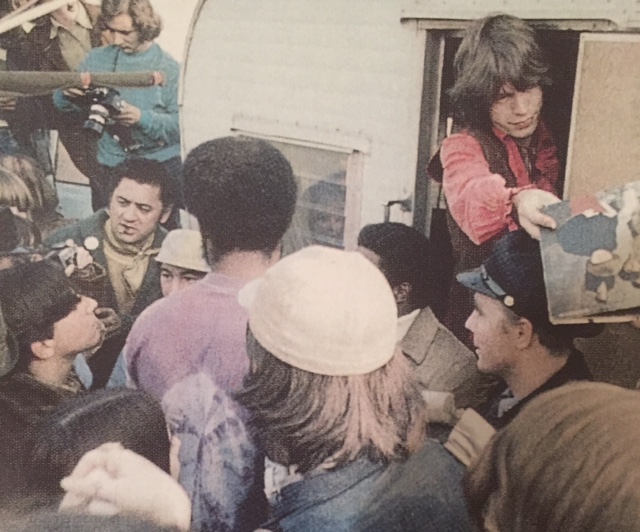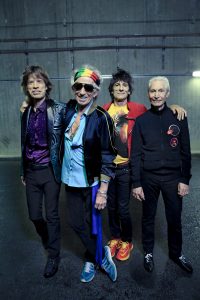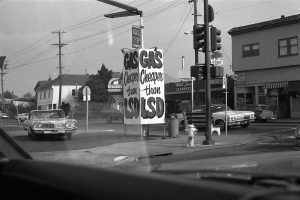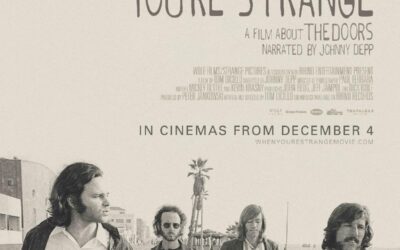Joel Selvin book published; The Rolling Stones in Mono, ABKCO Records collection of 186 tracks to be released September 30th;
Rolling Stones set to Headline Desert Trip Coachella October 7th and 14th Dates with Bob Dylan
By Harvey Kubernik c 2016
There’s a lot of Rolling Stones’ activity scheduled for fall 2016.
For the first time ever, all mono studio recordings released by the Rolling Stones in the 1960s will be available in one unique historic collection.
On September 30 ABKCO Records will make available worldwide the vinyl and CD box sets of The Rolling Stones in Mono as well as Standard Digital, Mastered for iTunes and True HD (96k/24 bit, 192k/24 bit and DSD).
The Rolling Stones in Mono was mastered by acclaimed award winning engineer Bob Ludwig at Gateway Mastering. For the project he utilized Direct Stream Digital (DSD) transfers from the original master recordings, with a sampling rate of 2,822,400. Lacquer cutting for vinyl was performed at Abbey Road Studios by Alex Wharton and Sean Magee. All vinyl box sets will be numbered and pressed on 180-gram vinyl. The Rolling Stones in Mono project has been overseen by Teri Landi, ABKCO’s chief audio engineer.
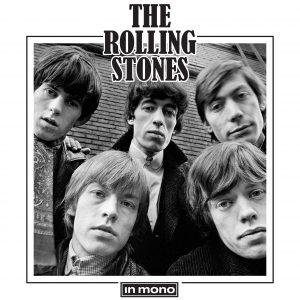
Spanning the era between 1963 and 1969, The Rolling Stones in Mono covers the formative years of the band and also spotlights the work of Hollywood’s RCA recording studio engineer Dave Hassinger.
During this era, most rock and pop recordings were originally recorded in mono, with stereo often an afterthought, dealt with only following the completion of the original (mono) version of a given track. In short, mono reigned and this was, indeed, the case for the Rolling Stones during the period. While typical playback systems of the time were less than sophisticated, the original mono recordings, especially as heard through quality components, were of the highest audio quality and had a powerful and very direct impact. “You felt you were in the room . . . listening to exactly what went down in the studio, no frills, no nothing,” Keith Richards wrote in his autobiography, Life.
“At this point it should certainly go without saying that any mid-Sixties state-of-the-art audio was always best delivered via a single solitary speaker,” insists Stone-ager since age ten Gary Pig Gold.
“Needless to say that speaker would usually be housed within the nearest hand-held six-transistor radio; all the better to remain Rolling atop the relentless drive of ‘Heart of Stone,’ ‘The Last Time,’ most obviously ‘Satisfaction’ and even up to and most certainly including ‘Street Fighting Man.’
“But over in the 12-inch division as well, each Phelge-arranged/Oldham-produced album did, does, and always will sound lean, louder and prouder in its true monophonic form. And who better could have possibly been chosen to help erect this newfound Wall of Stones than Jack ‘Specs’ Nitzsche, that invaluable L.A. key to the Aftermath of the band’s initial successes. True, the Brian Jones-led intricacies of this ’66 work especially required more thought, more notes, and many more hands-on-deck. Nevertheless, like those Beatles simultaneously toiling over their Revolver back home a, you bet, mono mix actually illuminates as opposed to muddies the likes of ‘Lady Jane’ and even ‘Miss Amanda Jones.’
“Come 1967 however, one would think Stereo would be the only way to fly, if for example the wildly pan-happy Are You Experienced mixes are of any indication. But again, somehow, it is the MONO Satanic Majesties which best exemplifies and illuminates the 3-D Stones – Keith’s guitars in particular! – throughout what many still most misguidingly believe to be the band’s dodgiest-ever forty-four minutes. And now it, like all its Mono-boxed brethren, should become the immediate go-to format for vintage-60s Stones forevermore.”
To understand why these mono mixes are so important, you have to know the historical environment,” suggests Daniel Weizmann. “The music’s original delivery system–45s and AM radio–was a total contrast to the world around it. In those days, you didn’t hear rock music at the supermarket, the stationery store, or the car wash. The piped-in instrumentals were “hi-fidelity” and crystal clarity was the gold standard. This new sound coming over the car radio was a thunderous onslaught, a dirty stampede in which no one instrument, not even the lead singer, could steal the spotlight. Compare any one of these tracks to something from the great Tutti Camarata or, say, a Bobby Darin 45 and you can immediately hear the difference. The Stones, more than most of their contemporaries, had a different set of sonic intentions–with hidden piano parts, tape bleeds, and a rumbling bass that seems to seep out onto every other instrument. It’s what set them apart. They aimed to disrupt.”
“I bought Out of Our Heads for $2.98 at Frigate Records in what is now West Hollywood in that glorious summer of 1965,” recalls author and record producer Kenneth Kubernik. “I still own it. ‘Mono’ is prominently displayed on the front cover; the alternative version, for a buck more, had something called ‘electronically reprocessed stereo’ or some such nonsense which made little sense to my eleven year old brain.
“Stereo was reserved for my friends parents hi-fi systems, to play Montovani (also on London Records, the Stones label) or Andy Williams with strings albums. Since we were still immersed in buying singles, the concepts of mixing, mastering, track separation, etc. made no impact. It was just the electric charge of that opening riff on ‘The Last Time,’ or Jagger’s commanding ‘THAT’S how strong my love is…’ which centered our attention.
“It was until years later that I finally heard the stereo mix of ‘…Satisfaction’ and the distant tinkle of Ian Stewart’s piano (or is that Jack Nitzsche) and Keith’s acoustic guitar finally made its presence felt. That’s fine for our current epicurean sensibilities; as a kid way back then, though, it was more than enough to sing along to the jangly, unkempt ‘Under Assistant West Coast Promo Man,’ whoever he was.”
“I heard something else in these unified mono mixes, though — a seriousness, a self-conscious commitment to announcing the power of this blues/R&B music and living out the freedom it seemed to promise,” reflected Dr. James Cushing.
“That seriousness comes through in the unified sound of the mono mixes. ‘Here are these songs,’ the albums say. ‘They are the essence of what we do and who we are.’ For contrast, I spun my clean mono LP of The Beatles’ Second Album, and the difference was immediate. The Beatles sound like they’re having way more fun with their Motown covers than the Stones are having with Solomon Burke and Bobby Womack!
“Actually, the Stones were ahead of the Beatles in terms of their use of stereo! Aftermath, from early 66, offers a stronger, more realistic stereo mix than Revolver or Sgt Pepper. Not being contractually tied to Abbey Road Studios, the Stones could sample a wider variety of engineering concepts and the early records really benefit from that.
I’m ambivalent about the mono-vs-stereo on Aftermath. Both mixes sound powerful to me; on the other hand, the stereo Revolver is less powerful than the mono.”
The Rolling Stones in Mono will contain a total of Andrew Loog Oldham and Jimmy Miller originally produced 186 tracks, 56 of which have never before been heard in mono since the advent of the digital age.
Before Oldham and the band parted company during 1967, manager/publicist and guidance counselor Oldham produced the group’s first fifteen singles, including “Satisfaction” which, in the second half of ’65, went to # 1 in 38 countries. Additionally he produced their first ten LPs and first three EPs.
During a 2002 interview, original Rolling Stones’ bassist Bill Wyman and I discussed the band recording in England and Stateside inside the RCA facilities.
“We had recorded at Chess for a couple of dates, a few times. When we came into Hollywood we went to RCA. We walked into the studio and it was too big. We were really worried. We were intimidated. We were used to recording in little places like Regent Sound. The studio was like this hotel room. And Chess wasn’t very big either. Suddenly we’re at RCA and it’s enormous. It was like Olympic (in England) later. But we solved that same problem. We thought ‘God, we can’t record in here. We’re gonna get the wrong sound.’
“But Andrew had this brain wave and he put us all in the corner of one room, turned all the lights down, and just tucked us all around in a little small circle. And we forgot about the rest of the room and the height of the ceiling. And we just did it in this little corner.
“And Dave Hassinger the engineer got all the sounds we wanted. Brian picked up all the instruments in the studio. The dulcimers, the glockenspiel, the marimbas. And I played some of that stuff as well. The organ where I laid on the floor and pumped the rhythm for ‘Paint It, Black.’
“We just experimented in there. Brian brought in electric dulcimers, autoharps. He just did so much to those songs from 1964-1966 in RCA. Brian created so many new sounds. Then he got the sitar together, just so he could play a riff. He wasn’t as good as George Harrison on it. George really learned the sitar and studied it. Brian didn’t, he just picked it up and worked out a little riff for one song. He did it with flutes. And he was brilliant at that. Dave Hassinger helped us do those things and he was always…We never had one bad word with Dave.
“At the time we didn’t know the R&B heritage of the RCA studios. All we knew was here was this engineer and on the same thing as we were. Dave used to say we’d just come in and do it. RCA engineer Dave Hassinger was one of the pro-voters for ‘Satisfaction’ being a single. And Jack Nitzsche said it was the first time in his life that he saw a band just come in with no thought or no preparation or anything. He said it in books before. We’d just do it and it sorta blew his mind. Because we had no pre-plans and just do it in three takes. “Let’s do that one.” RCA was our first studio that had four tracks. We were on two and three tracks before that.”
The Rolling Stones are scheduled to headline October 7th and October 14th 2016 play dates with Bob Dylan at the Empire Polo Field in Indio, California, the annual site of the Coachella music festival. The band also booked a Las Vegas show for October 19th at the T-Mobile Arena.
In 1997 I interviewed Keith Richards around a Stones’ gig at the San Diego Sports Arena. I previously attended numerous recording sessions for their Bridges to Babylon album in Hollywood.
During our chat, we discussed Keith’s Wingless Angels collaboration and the impact it had on his road work with the Rolling Stones.
“I’m playing a little different on tour. Yeah, I’m more conscious of dynamics. It’s exactly what it’s about. To make a record like the Wingless Angels, ‘Oh this is a great little pastime . . . a hobby’ when you’re doing it. You are not thinking in terms of that. But when you’ve finished it you realized that you’ve learned a whole lot about recording and music from like ten guys or so who live up in the hills in Jamaica and they’ve taught me, or re-taught me, or reminded me of like the spaces that can be left and that silence is your canvas and never forget it.
“Once you’re on the stage it’s just some floor boards in spite of it. And you’re not really aware of everything you are seeing. But what really keeps tours going and alive for the band and therefore for the audience I think is to change it and to play the smaller joints indoors. It’s necessary to change the scale sometimes. Otherwise you can really get used to the large thing. And you realize when you’re playing a small gig that you get dynamics back and you can re-translate that back to the big stage.
“You kind of accept usually when you start a tour for it to have its high points and low points and you start to go for a happy medium, and hope there’s more high points than low. I mean we’ve got the guitars where we want them. But I think it’s a mixture of that and also the experience of the band.”
Also check out the just published Joel Selvin book, Altamont, the Rolling Stones, the Hells Angels, and the Inside Story of Rock’s Darkest Day.
Altamont. For those who remember the 1960s or continue to be absorbed by those years of cultural upheaval, the name of that infamous December 6, 1969 free concert in the Bay Area headlined by the Rolling Stones evokes the end of innocence and the dark side of a turbulent era. Immortalized in the Albert and David Maysles defining film, Gimme Shelter, the violent events that unfolded have become legend.
Large portions of the story has been left untold, and in Altamont: The Rolling Stones, the Hells Angels, and the Inside Story of Rock’s Darkest Day, author, award-winning veteran journalist and former San Francisco Chronicle music editor Joel Selvin provides a comprehensive account, filled with never-before-revealed details about the well-intentioned initial event gesture from the Stones, plus the machinations, mishaps, assorted agendas, and show business negotiations leading up to it and the repercussions that followed.
Selvin begins his book tour in late August promoting his Del St/HarperCollins title, including an August 24th appearance at Book Soup in West Hollywood, California.
The rock sleuth has successfully weaved witness testimony, interviews, previous sources and published accounts with the voices of key players and people who were there: Paul Kantner and Jack Casady of Jefferson Airplane, CSN&Y’s David Crosby, Mickey Hart of the Grateful Dead, Carolyn Garcia, Rock Scully, Wavy Gravy, Michael Shrieve and Michael Carabello of Santana, Sam Cutler, and Tony Funches, as well as cops, journalists, medical crews, film production participants, and audience members.
Over 20 years of research, Selvin uncovers buried truths and dilutes many myths that are now finally revealed with a bold conclusion. This mystery of this infamous event now has fact-filled history.
There are also cinematic aspects displayed in the pages. Especially if you like the gripping tension of classic black and white television shows like Dragnet and Perry Mason, or the sex, drugs, ego and celebrity missteps now depicted on TMZ and E! True Hollywood Story!
What still emerges from Selvin’s fascinating, unsettling and disturbing study of the Altamont dream and subsequent nightmare is that it’s a music book.
In addition, it’s a valuable peak into the year 1969 life of the Rolling Stones, and particularly their lodging, Let It Bleed recording sessions and night clubbing in Hollywood.
I attended both cosmic and awe-inspiring Rolling Stones’ Southern California shows in November 1969 at the Forum in Inglewood. Terry Reid, B.B. King and Ike & Tina Turner were on the bill.
In 1969, assorted members of the U.S. west coast print music media constantly raised questions about ticket prices on their ’69 trek. I had no qualms whatsoever paying $7.50 for my lodge and colonnade ducats to witness the Stones galvanize Southern California audiences.
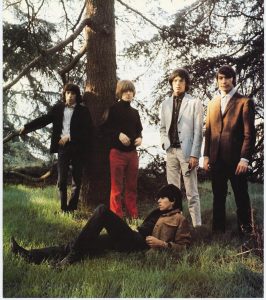 As for Altamont, I really didn’t need to schlep 450 miles a month later to San Francisco to see the same songs done live again by the Rolling Stones. Plus, I was still totally buzzed from the all-nighter at the Forum. Besides, I had a job in Culver City at the West Los Angeles College library around a full schedule of classes. I had a coveted student deferment.
As for Altamont, I really didn’t need to schlep 450 miles a month later to San Francisco to see the same songs done live again by the Rolling Stones. Plus, I was still totally buzzed from the all-nighter at the Forum. Besides, I had a job in Culver City at the West Los Angeles College library around a full schedule of classes. I had a coveted student deferment.
It was the first semester the college opened. We were taught in bungalows. Basically it was a high school with ash trays. It was during the summer of 1969 that I made an acquaintance with a guy named Tony Funches, a Vietnam veteran, boxer and Karate belt holder, who soon became our student body President.
But then I didn’t see Tony on campus during late 1969 and all of 1970. I never knew why but found out later: Tony was newly employed at the time: Serving as Mick Jagger’s body guard on their ’69 tour. In 1970-1971, he headed security for Jim Morrison and the Doors, then later for Willie Nelson.
Needless to say, when I first saw the movie Gimme Shelter with fellow classmate Bob Sherman in Hollywood, we immediately looked at each other when Tony initially appeared on screen. First in a Muscle Shoals recording studio session during a playback of “Wild Horses” later protecting Jagger around the group’s airstream trailer in the surrounding chaos. Tony was wearing a splint after suffering a broken arm in a fracas with a couple of Hells Angels. We both marveled, “Hey-isn’t that Tony from school?”
I am happy to say that in 2015 I re-connected with Tony Funches at the former home of Jim Morrison in Laurel Canyon. Not from Facebook but owing to circumstances of destiny. When we embraced, Tony had a copy of my Canyon of Dreams The Magic and Music of Laurel Canyon and wanted me to sign it. We talked for six hours, followed by a meal at Barney’s Beanery. Shortly afterwards, Doors’ drummer John Densmore came by the house and picked Tony up.
Selvin begins the Altamont story in London in early 1969. Despite being one of the biggest rock bands in the world, the Rolling Stones were nearly broke. They had not performed live in the U.S. since 1966, and a stateside tour seemed the answer to revive the band’s moribund status. But, much had changed about rock concerts in those few short years, in no small part due to the trend toward drug-infused outdoor concerts that had started in San Francisco with bands like the Grateful Dead and Jefferson Airplane.
The Stones tested the waters themselves with a successful July concert in London’s Hyde Park. Coming to America that fall, they played to packed arenas, but the idea of a free concert pervaded the tour, and it was decided to mount one in San Francisco. When the city refused permits, and a site near Sonoma fell through at the last minute, the concert was hastily moved—only 36 hours before its scheduled start—to Altamont, a remote, largely derelict motor speedway southwest of San Francisco.
“A week after I was discharged from the Army in Vietnam, the Stones played Altamont,” Roger Steffens explained to me in July 2016. “I decided to go there with a bunch of friends, and we stopped to gas up on the corner of Shattuck and Ashby in Berkeley. I took a photo. [Now in Steffens’ The Family Acid].
“We got about seven miles from the site when suddenly the road turned into a parking lot. Daunted by the thought of a huge hike, at the last minute we spun around and headed back to the Bay Area, riding in the roadside when suddenly a gigantic hole, eight feet deep and big as a truck appeared before us, and we slammed on the brakes at the very last minute before being swallowed up. It seemed a metaphor for the entire day that followed at the concert.”
The proceedings had a negative vibe from the start. The Grateful Dead—slated to share the stage with the Stones, along with Jefferson Airplane, Santana, the Flying Burrito Brothers, and CSNY—had arranged for members of the Hells Angels motorcycle gang to act as security, an arrangement that had always worked in San Francisco’s Golden Gate Park. But, these were not San Francisco’s Angels and, fueled by alcohol and drugs, they proved a menacing army against the hundreds of thousands of equally high concertgoers.
“Brown Sugar” was performed live for the first time at the Altamont outdoor venue.
“Altamont was dark and dreary from dawn until dark; the sun never came out,” attendee and survivor Ron Lando stressed in a 2016 email I received from him. “The crowd was extremely restless all day with lots of beer and pot making its way throughout the entire venue. By the time the Stones hit the stage the unified crowd became somber and it was all downhill from that point on.”
“It was very obvious from the very beginning that this was gonna be fucked,” Graham Nash told me in a 2007 interview.
“First of all getting in there. There was no way we could get into Altamont. It was insane. So my friend Leo Mokota, who was our tour manager, hot-wired a car. He and us, and the lawyer, Melvin Belli, made it into Altamont. But it was fucked from the start.
“First of all, the music that they played between acts was electronic music. The Grateful Dead didn’t play. And we were only there for Jerry [Garcia]. ‘Cause it was Jerry that called Crosby and said, ‘Hey man, we’re gonna do this Woodstock West, man, you gotta be a part of it. We’ll all be there, man.’ We played and not even sure how well we played. Maybe 45 minutes or something and we got the fuck out.
“We did a UCLA gig at Pauley Pavilion that evening. At which Stephen collapsed. [Stills had been injured at Altamont]. But I think the Pauley Pavilion show was really pretty good.”
“Listen,” Chris Hillman mentioned to me in a 2007 interview, “in 1969 I’m walking on stage at Altamont with the Burrito Brothers and David Crosby is walking off after a set with CSN&Y, and we’re looking at each other and going ‘what’s going on here? And he said, ‘It’s not good.’”
“Some kind of mass toxic psychosis was under way,” Selvin writes. Long before the Angels killed a young black man, Meredith Hunter, in full view of the performers and the crowd, ‘blood was already on the ground.’
Selvin’s investigative work informs us of the other, less-publicized deaths at Altamont, including a drowning and two vehicular deaths and how the drugs readily available and consumed at the concert had changed from those available at earlier outdoor concerts, including Woodstock, altering the mood of the event.
He constructs how the classic Gimme Shelter documentary by the Maysles brothers shaped the story in the public’s mind—for better or worse and how concert logistics, including a very low stage, precipitated the violence. In the process, Selvin determines the long-term effect of what happened at Altamont on the Hells Angels.
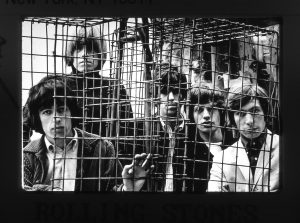 History has pretty much blamed the Rolling Stones for the Altamont debacle. It certainly wasn’t entirely their fault. Bay area fixtures like promoter Bill Graham and Ralph J. Gleason the music critic of The San Francisco Chronicle were especially publically preoccupied with the price of admission entry for the Stones’ ’69 tour, and are partially responsible for the madness that engulfed Altamont from the hurried planning to the concept’s aftermath. “There are no specific guilty parties for Altamont. We were all guilty, myself included” admitted Gleason.
History has pretty much blamed the Rolling Stones for the Altamont debacle. It certainly wasn’t entirely their fault. Bay area fixtures like promoter Bill Graham and Ralph J. Gleason the music critic of The San Francisco Chronicle were especially publically preoccupied with the price of admission entry for the Stones’ ’69 tour, and are partially responsible for the madness that engulfed Altamont from the hurried planning to the concept’s aftermath. “There are no specific guilty parties for Altamont. We were all guilty, myself included” admitted Gleason.
Dr. James Cushing of the Cal Poly San Luis Obispo English and Literature Department, who hosts a weekly radio program on the 97.3 The Rock KEBF in Morro Bay in Central Coast California, theorizes about Altamont, which followed the 1967 Monterey Pop International Festival and the Woodstock Music and Art Fair Festival in 1969.
“1968 was a heavy political year — King and Kennedy being killed, the Democratic party collapsing in Chicago, Nixon winning the election, the war dragging on and on and on, and the sense that the counterculture was failing in its attempt to build a new America.
“1969 was Nixon’s first full year as President and the ugliness at Altamont expressed a hopelessness that seems now connected with Nixon’s cynical self-serving narcissism.
“The ancient ritual of Dionysus involved the ritual stabbing of a goat, who was understood to function as a stand-in for the God (who must die to be reborn) and an offering to him. Rock festivals are already Dionysian events, but Altamont got a little too authentically ancient for the modern conscience: an actual African-American man named Meredith Hunter was stabbed to death, in front of a Dionysian band whose rise to fame had involved loving attention to and respectful appropriation of the music of African-American men. It’s an awful irony.”
However, contrary to popular belief, many people who went to Altamont had a good time on the premises.
Take into consideration actor/poet and East Hollywood wordsmith Harry E. Northup.
Northup has made a living as an actor for over 30 years, acting in 37 films, including Mean Streets, Over the Edge (starring role), Taxi Driver and The Silence of the Lambs. Northup is that rare American actor who is also an accomplished poet with 10 books of poetry published. He is a principal in Cahuenga Press.
In July of 2016 Harry emailed me recollections about Altamont.
“I was working as a waiter at the Old World Restaurant on the Sunset Strip. My first wife, Rita, & I had arrived in Los Angeles, from New York City on March 5, 1968. That day we got an apartment in Santa Monica & that night, I got a job as a waiter at the Old World. I came to L.A. to work in the movies. I worked at night & auditioned for movie & TV roles in the day. We hung out at the beach & went to every rock ‘n roll concert that we could at the Santa Monica Civic, Palladium & Venice Beach.
“Rita & I and our 10-month-old son, Dylan, drove to San Francisco, Ca., on the 5th day of December, 1969, in our blue & white Volkswagon van. It had
a bed in the back. We slept in it in the Haight. The morning of the 6th, we ate at Brother Juniper’s — I remember seeing a black man, sitting next to us, with a cross cut into the top of his head — & then we drove to Altamont. It was slow going when we got near the Speedway. We parked on the side of the road & walked a long way. We took turns carrying Dylan.
“At the concert, we met 5 long-haired surfer guys & 3 girls we knew from Santa Monica. It was a gray day. It seemed like half a million people were there. We had driven up Pacific Coast Highway many times from Santa Monica to see the Grateful Dead, Jefferson Airplane, Janis Joplin, & the Paul Butterfield Blues Band, among others, in Golden Gate Park & other venues, but had never been at a gathering this large.
“Most of the time, we stayed on the perimeter & danced. My wife loved the Stones. She pranced & pointed & sang like Mick. She had seen the Beatles at Shea Stadium years before. (Harvey Keitel, who was my fellow student in Frank Corsaro’s Method acting class in Manhattan, had introduced her to me at the one party that I had given in New York City in the five years that I lived there, from 1963-1968.
“He also introduced me to Martin Scorsese, who hired me to play The Rapist in his first feature, Who’s That Knocking At My Door in 1968. Marty hired me to act in his first six features & first TV show. Bette Midler, by the way, sang Bob Dylan’s ‘A Hard Rain’s Gonna Fall’ at that same party.)
“We shared joints, people gave us food: fruit, juices, sandwiches. Our surfer friends danced, held Dylan. Once, I snaked my way down to the left side of the stage just as the Stones sang, ‘Jumpin’ Jack Flash.’ It was electric. I saw a young woman, who kept trying to climb up onto the stage, & at each attempt, a Hells Angel, who wore a wolf’s head kicked her in the face. She must have been a masochist, because she kept going back for more. I headed back to our group. We danced & had a wonderful time. The Stones were tremendous. We felt renewed.
“It was a long slow journey back to our VW. It wasn’t until we were driving south on the 5 Freeway that we heard, on the radio, about the killing at Altamont.
“In 1970, I saw Gimme Shelter by the Mayles Brothers, which showed the violence in all its vividness. In 1968, I had seen the Mayles Brothers’ film, Salesman.
“To most audiences the film reflected an American consciousness and lifestyle more of the 1950s than of the Summer of Love, hippies, LSD, radical politics, and headlines and buttons proclaiming ‘God is Dead,'” wrote the film scholar, Vincent Lo Brutto. Salesman was about ‘selling Bibles door to door’ — quite the opposite of Gimme Shelter.
“In 1973, I played the Vietnam vet who destroys his own homecoming in Scorsese’s first masterpiece, Mean Streets. Scorsese utilized ‘Jumpin’ Jack
Flash’ on the soundtrack for Johnny Boy’s (De Niro) entrance into the bar.”
Two of America’s noted non-fiction filmmakers, Albert Maysles (1926-2015) and his brother David (1932-1987) are hailed as pioneers of “direct cinema,” the distinctly American version of French “cinema verité.”
The duo were the first to make non-fiction feature films- movies in which the drama of human life unfolds as is, without scripts, sets, or narration. During 1964 they directed the seminal mini-tour documentary What’s Happening! The Beatles in the USA. In 1965, Albert became a Guggenheim Fellow.
It was in 1968 when the Maysles brothers arrived with the non-fiction feature Salesman. It won an award from the National Society of Film Critics. In 1992, the Library of Congress saluted the film for its historical, cultural and aesthetic significance. They later helmed the 1975 documentary Grey Gardens.
The Maysles’ multi-format Gimme Shelter movie has pretty much created the history and ongoing public opinion regarding Altamont.
In 1994, Albert re-united with the Rolling Stones to film an up-to-date portrait, Conversations with the Rolling Stones broadcast on VH-1.
n 2013 I interviewed Albert Maysles.
HK: Talk about the film Gimme Shelter.
AM: We got a phone call one day from Haskell Wexler who said the Rolling Stones were in town in Los Angeles and they were about to go on a nationwide tour. And they were going to be in New York the next day at the Plaza Hotel. “Maybe you should look them up.” Again, in this particular case, neither one of us knew their music. But we trusted Haskell. “These guys must be interesting.” So we knocked on their door at the Plaza Hotel and we started talking to them. “Well, we’re going to be performing the next evening in Baltimore, you are most welcome to attend.” We went to the show. “Yeah. These guys are good.” And we followed it up by making a deal with them. And we then filmed them at Madison Square Garden. They paid us a small amount to get going. I think it was $14,000.00.
“We did have several cameras. I think there were four of us. That was different. The camera people were people we knew already. They knew my style so everything was consistent from one camera to another. And that worked out beautifully. I don’t know how to put it into words to describe Jagger on stage. You just have to see the footage.
“Regarding their live show. It’s interesting. You put the camera in the hands of one person and it’s so cold. And another person, it’s hot. You get the hot cells from what you see on the screen. What is so startling to me is that so many reviewers think that the camera work is just great. When it is so cold that I would dismiss it. But the lighting is right and the angles are right.
“We joined after the tour began and a moment in American history. Mick Jagger was very invested during the process of the movie without in any way trying to control it. That was important. He never said, ‘Oh, you need to get this. And you need to get that. Do this.’ And we had a lot more cameras at Altamont. That was unusual.
HK: Talk to me about Altamont and then filming it.
AM: It interesting, very early on, just before the concert began I had myself placed just down below filming the audience in exactly the same spot where the killing took place. So I’m there and I’m filming and the guy just below me with his child gets up and he says, ‘If you don’t leave this place right here, right now, I’ll kill you.’ He may have thought that I was gonna drop the camera on his son. I don’t know what his explanation was. Fortunately, my brother was at the right place and I was at the best place to get the Stones themselves.
“It was interesting the way the press handled it. There was a very good reviewer in The New York Times, by Vincent Canby, in the middle of his review wrote, “The Maysles must have said, ‘A-ha!’ when they saw that they had captured the killing on film in the editing room.’ But the title of his piece, which the editor ascribed to it was, ‘Making Murder Pay.’
“In fact, I mean it was wrong at both ways. We weren’t doing it just to make the money. Secondly, it wasn’t a murder. No one was able to prove the motivation. I was on the stage just behind the Stones for most of the filming. I could see them and the immediate audience. A side view of the Stones and a direct view of the audience. Where my brother with another camerman was luckily on a truck to the side of the stage out of my view, and maybe out of the view of the Stones, but in view of the killing.
HK: After principal filming and you are in the editing stages, the movie sort of becomes a documentary about a documentary, or even where Mick Jagger and Charlie Watts are commenting about a work in progress.
AM: The odd thing is, when we were filming them. Mick said at one point, “At some point after the film was shot they’d like to take a look at it.” It was their idea. And then when Charlotte (Zwerin) was editing it, she said, “let’s call them up on that and let’s film them watching. It would be just great.” It was their idea and her idea and it worked beautifully of course. For example, when I was shooting the Stones listening to the playback of ‘Wild Horses,’ my brother whispered in my ear, ‘Take a look at his Keith’s boots.’ and I shot them.
“And then when we showed Mick the film he didn’t say, ‘Eliminate this.” But he was taken by the horror of the events and he couldn’t give us the release. So we waited six months. We never talked it over with Mick. But my brother happened to meet the producer and director of Performance, Donald Cammell on one occasion. And David told him that we had some problems in getting a release. So Donald said, ‘Let me take a look at it.’ So he saw the film and said, ‘Don’t worry. I’ll take care of it.’ And that’s it. That is how we got the OK.
(Harvey Kubernik has been a music journalist for over 44 years and is the author of 8 books. During 2014, Harvey’s Kubernik’s Turn Up the Radio! Rock, Pop, and Roll in Los Angeles 1956–1972 was published by Santa Monica Press.
In September 2014, Palazzo Editions packaged Leonard Cohen: Everybody Knows, a coffee—table—size volume written by Kubernik, currently published in six foreign languages. BackBeat/Hal Leonard Books in the United States.
Harvey and Kenneth Kubernik wrote the text for photographer Guy Webster’s award-winning first book for Insight Editions published in November 2014. Big Shots: Rock Legends & Hollywood Icons: Through the Lens of Guy Webster. Introduction by Brian Wilson.
In March, 2014, Kubernik’s It Was 50 Years Ago Today The Beatles Invade America and Hollywood was published by Otherworld Cottage Industries.
In November of 2015, Back/Beat/Hal Leonard published Harvey’s book on Neil Young, Heart of Gold).
During 2017, Sterling will publish Harvey Kubernik’s 1967 Complete Rock Music History on the Summer of Love).

